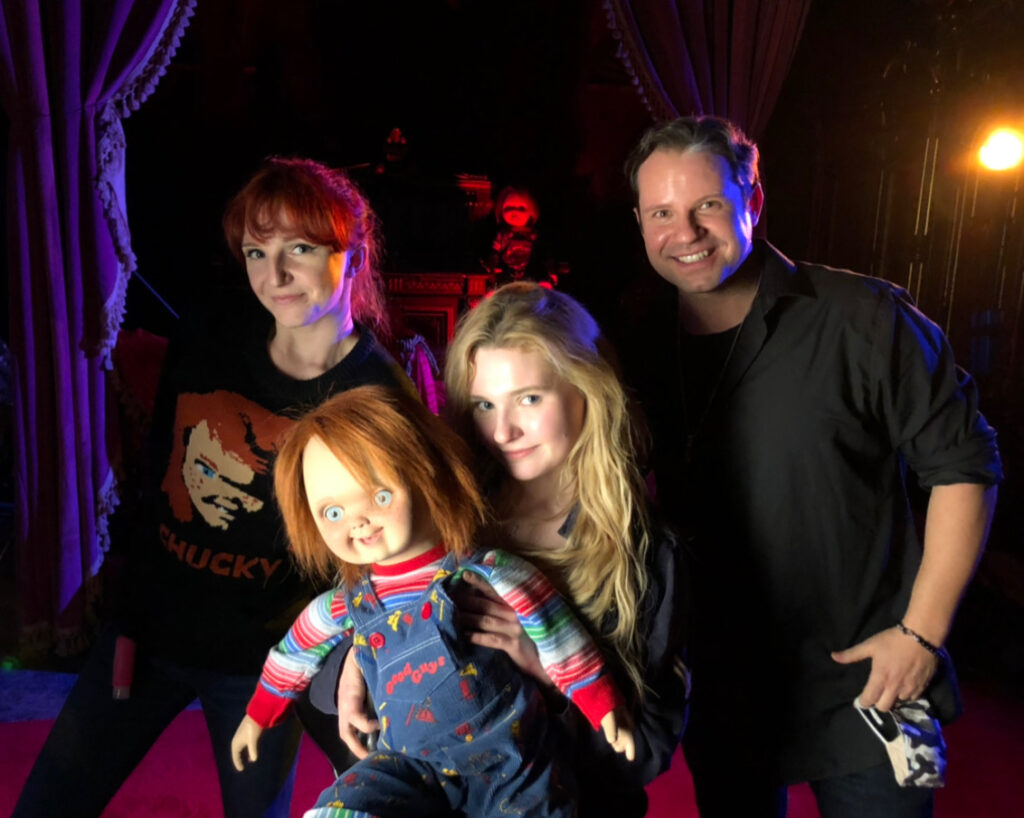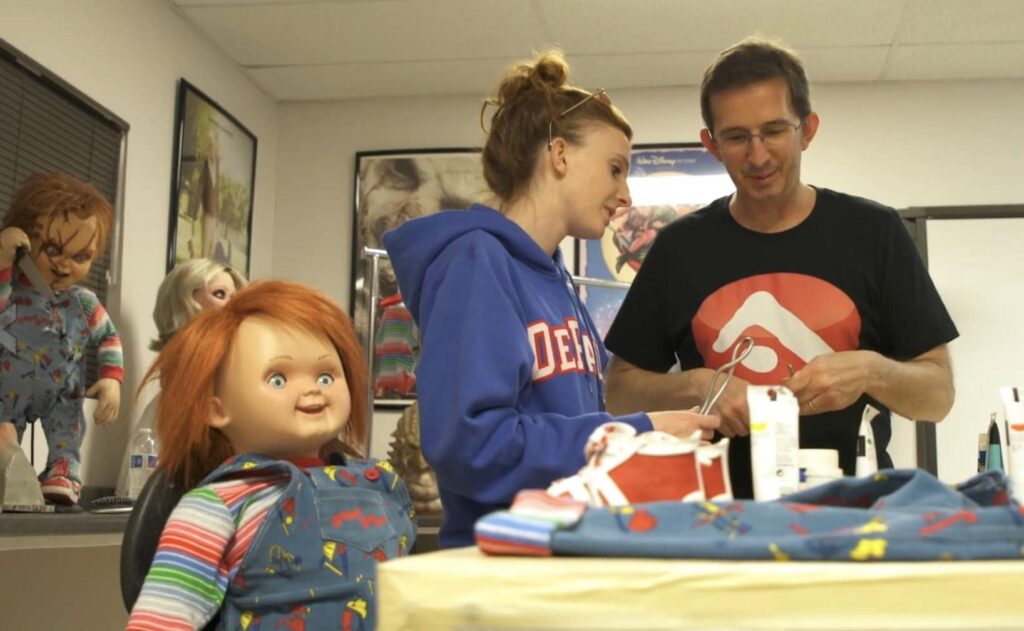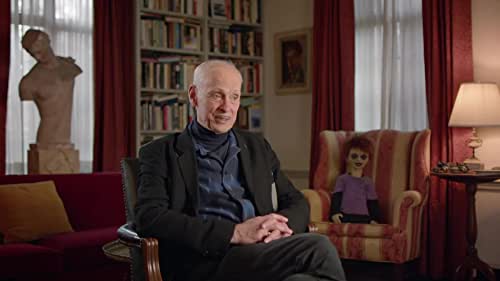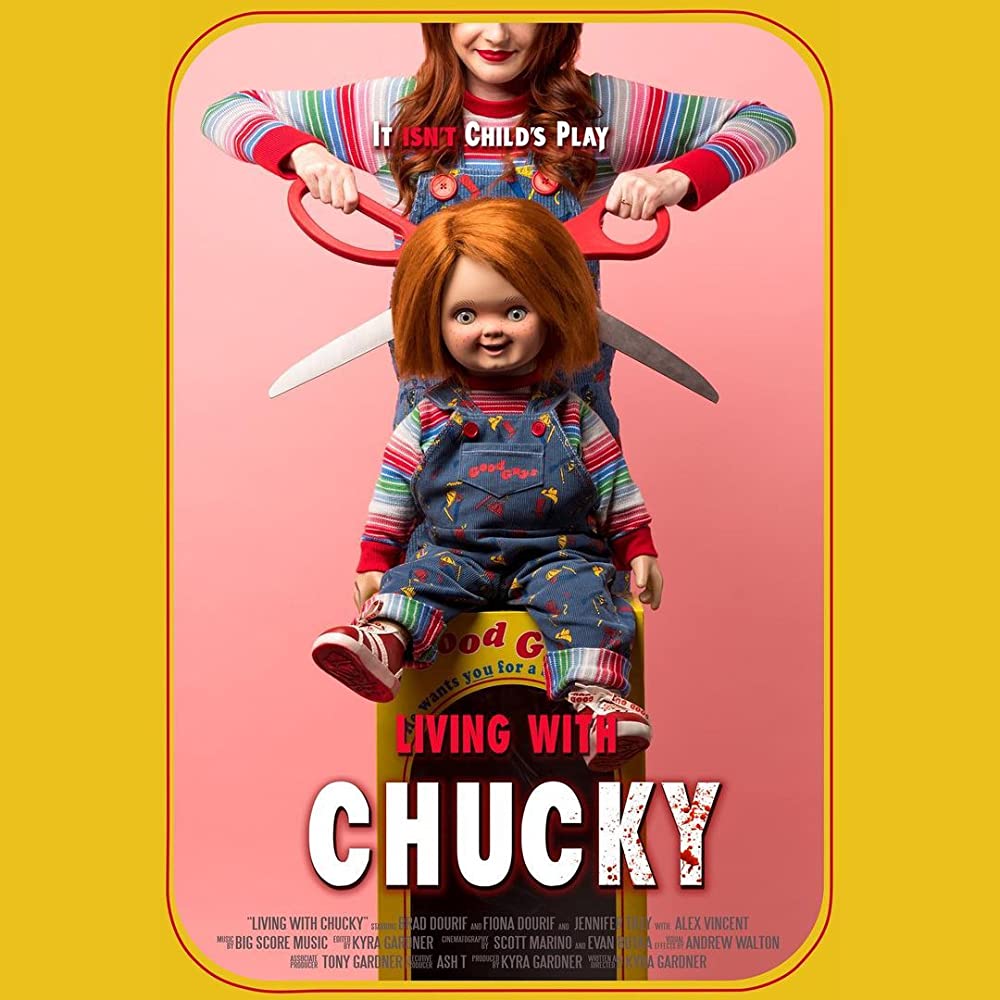During the past 35 years, CHILD’S PLAY has become one of our most enduring — and improbable — franchises of all time. Spawned from a film everyone involved figured to be a one-off, it currently boasts six sequels and a television series that’s recently been renewed for its third season. Obviously, unexpected, long-running franchises aren’t an anomaly in the horror genre, but Chucky’s enduring popularity is especially remarkable considering his reign began firmly in the shadows of established icons like Freddy Krueger, Michael Myers, and Jason Voorhees. In the years since, however, Chucky has stepped out of those shadows to clearly become the fourth member of this Mount Rushmore of modern horror icons. Even more impressive: he’s done so under the auspices of one core creative team during this entire time. Sure, filmmakers will often refer to their movies as “a labor of love,” but there’s no doubt the phrase applies to a franchise where several folks have dedicated decades of their lives to it. Along the way, they’ve come to form an odd family of sorts, and Kyra Gardner — daughter of long-time Chucky effects maestro Tony Gardner — has crafted a loving tribute to a franchise that has been a part of her life since she was a child. Part franchise retrospective, part ode to the sacrifices artists often have to make, LIVING WITH CHUCKY provides a unique, personal insight into a series that’s become a pop culture institution.
The first hour of LIVING WITH CHUCKY provides context by running through the franchise’s storied history one movie at a time, with various talking heads providing commentary about each film’s development and production. The usual suspects prominently appear throughout, like series creator Don Mancini, producer David Kirschner, Brad Dourif, Fiona Dourif, Jennifer Tilly, Alex Vincent, John Waters, and Christine Elise. Other, perhaps more surprising faces include Abigail Breslin, Dan Povenmire, Marlon Wayans, and Lin Shaye, who offer insight into their particular area of expertise (for example, Breslin describes her experience as a child actor, while Shaye muses upon the horror genre in general). It’s rapid-fire in nature, with the topic of conversation darting throughout to give a nice, breezy overview of the series.
Given the hook here, it’s no surprise that the actual cast and crew of the films prove to be the most engaging. No disrespect to the other participants, who actually do bring some interesting perspective to the material — it’s just that fans are naturally going to gravitate toward the folks involved with making the films. Their musings are full of anecdotes and history, much of which will be familiar to long-time CHILD’S PLAY fans. The uninitiated, however, will find the brief backstory about the original film to be quite illuminating, as Mancini and Kirschner recount how the project came together from the former’s BLOOD BUDDY script. Kirschner has always been a little bit of an unsung collaborator: not only did he give Chucky his name, but his suggestions helped shape the original film, which became an unexpected foundation for an entire career. He attests that he thought CHILD’S PLAY would come and go, so he was as surprised as anybody when he found himself producing a sequel two years later. As LIVING WITH CHUCKY unfolds, it becomes clear that he and Mancini are the patriarchs of this found family, and they seem genuinely grateful and humbled to be such a vital part of horror history.

When it comes to the original trilogy of films, the observations are a bit uneven. The original obviously gets its due, while the first sequel features some nice stuff between Elise and Vincent, who remained close following the film (as you can imagine, this sort of thing becomes a running theme throughout the documentary). Part 3’s status as the franchise’s black sheep is all but confirmed by the few minutes they spend on it here, which mostly amounts to Vincent being complimentary of Justin Whalin, who took over the Andy role (someone else is eager to point out that Chucky switching out the blanks for live rounds during the military exercises might be the most fucked up thing he’s ever done, which is true). This stretch of the documentary also leans heavily on former Fangoria editor Tony Timpone to provide some historical context, while vintage behind-the-scenes footage catches a glimpse of effects legend Kevin Yagher and his crew bringing Chucky to life.
In a nice turn of events, LIVING WITH CHUCKY delves a little bit deeper into the later sequels, something that’s noteworthy for BRIDE and SEED, whose home video releases haven’t featured the most lavish supplements. Everyone involved is quite candid about the campy direction these two films took, particularly the much-maligned SEED. Despite that film’s infamous reception, Mancini and company remain unapologetic about it here, which really fits the familial theme of the documentary: Chucky’s absurd fifth outing may not have found the wide audience its creators were hoping for, but it was certainly ahead of its time in embracing the LGBTQ community, which has become an integral part of the franchise’s identity. I appreciated this part of the documentary especially: what Mancini and company have been able to do for the past 25 years — taking a pop culture staple and molding it to an increasingly idiosyncratic reflection of its creator—has been nothing short of remarkable. It’s not just that Chucky has endured: he’s done it in the face of multiple trends that have been resistant to dwelling on long-established continuity. Hollywood’s parade of remakes, reboots, and requels hasn’t been able to keep this good guy down, and LIVING WITH CHUCKY is a rousing testament to that.

Around the hour mark, Gardner appears on camera herself and begins to make the case that Chucky has endured precisely because of the franchise’s family environment. These movies aren’t the cynical product of a studio looking to cash in on a property — they’re the life work of Mancini and a ragtag crew that has traversed the globe to continue their exploits. From this point forward, LIVING WITH CHUCKY becomes more like a family reunion, with each participant sharing fond memories of each other and the productions. For Gardner, this documentary was an opportunity to bring her two families together and acknowledge the extraordinary amount of effort it takes to produce a film. At one point, Wayans likens it to going to war: you go into the trenches and grind your way through it at times, all in the service of art and entertainment. Others echo this sentiment, noting especially how difficult it can be to leave your family for months at a time to work on a production thousands of miles away. It’s here that Gardner’s aim with LIVING WITH CHUCKY becomes clear: when it comes to filmmaking, we sometimes take for granted how miraculous movies are. As John Waters insists during one of his interviews, even the worst movie ever took an incredible amount of effort, and, if nothing else, this documentary is a nice reminder that we should especially appreciate something as miraculous as the Chucky franchise.

And there’s plenty of love to go around in LIVING WITH CHUCKY, a documentary that goes out of its way to paint an unexpectedly heartwarming portrait of a cast and crew that’s spent so much of their lives making movies about a homicidal, foul-mouthed doll. Several moments down the stretch make it abundantly clear that these folks do have a true affection for the franchise, for each other (Brad and Fiona Dourif share a really wonderful moment at one point), and for the fans who have stuck with them through the years. By the end of the documentary, it becomes clear that the title applies to everyone, especially those of us of a certain age who can barely remember a world without Chucky (like yours truly, for example: I was 4 years old when the original CHILD’S PLAY was released, so he’s been just as omnipresent as his precursors in my mind). It’s this personal touch that truly sets LIVING WITH CHUCKY apart from similar documentaries, and I only wish it had been more of a hook here. Treating Gardner’s connection to the material as a mid-movie reveal results in a slightly uneven structure. There’s a true sense of purpose to the second half of the documentary, whereas the retrospective part is a more scattershot collection of anecdotes and memories.

Taken as a whole, though, LIVING WITH CHUCKY is a worthwhile look at the franchise, especially if you need a quick dose of it. I often like to watch these sorts of documentaries in lieu of watching the films themselves just to get a quick fix, and this one certainly does that job. At 100 minutes, it’s not as exhaustive as some of the deep dives we’ve seen for other franchises, but that’s a virtue here because LIVING WITH CHUCKY isn’t cut from the same cloth as tomes like NEVER SLEEP AGAIN or CRYSTAL LAKE MEMORIES, which clock in at 4 and 6 hours respectively. Instead, think of it as an especially well-done supplementary feature that deserves a spot on your shelf alongside the rest of your Chucky collection.
LIVING WITH CHUCKY is currently streaming on Screambox.
Tags: Abigail Breslin, Alex Vincent, Brad Dourif, Christine Elise, chucky, Cinedigm, Dan Povenmire, David Kirschner, Documentaries, Don Mancini, Fiona Dourif, Jennifer Tilly, john waters, Kevin Yagher, Kyra Elise Gardner, Kyra Gardner, Lin Shaye, Marlon Wayans, Tony Gardner




No Comments